The Castle Of Coca: One Of The Best Examples Of Spanish Mudejar Brickwork
Coca Castle was built in the 15th century in the small town of Coca in central Spain.
It is one of the finest examples of Spanish Mudejar brickwork, a style that blends Moorish and Gothic designs.

Location Of The Castle Of Coca
The castle stands on the outskirts of Coca, about 45 kilometers (30 miles) north of Segovia.
Unlike many Spanish castles, which were strategically constructed atop hills, Coca Castle was built on the edge of a plain, overlooking a meander of the River Voltoya, a tributary of the River Eresma.
The castle is fortified by a deep, wide moat, enhancing its defensive capabilities and making it a formidable stronghold.

History Of The Town And The Castle Of Coca
The town of Coca was the birthplace of Roman Emperor Theodosius I.
It has a long history dating back to the 2nd century BC when the Arevaci people inhabited it.
The Construction Of The Castle Of Coca
The castle was commissioned by the influential aristocratic family, the House of Alba de Tormes.
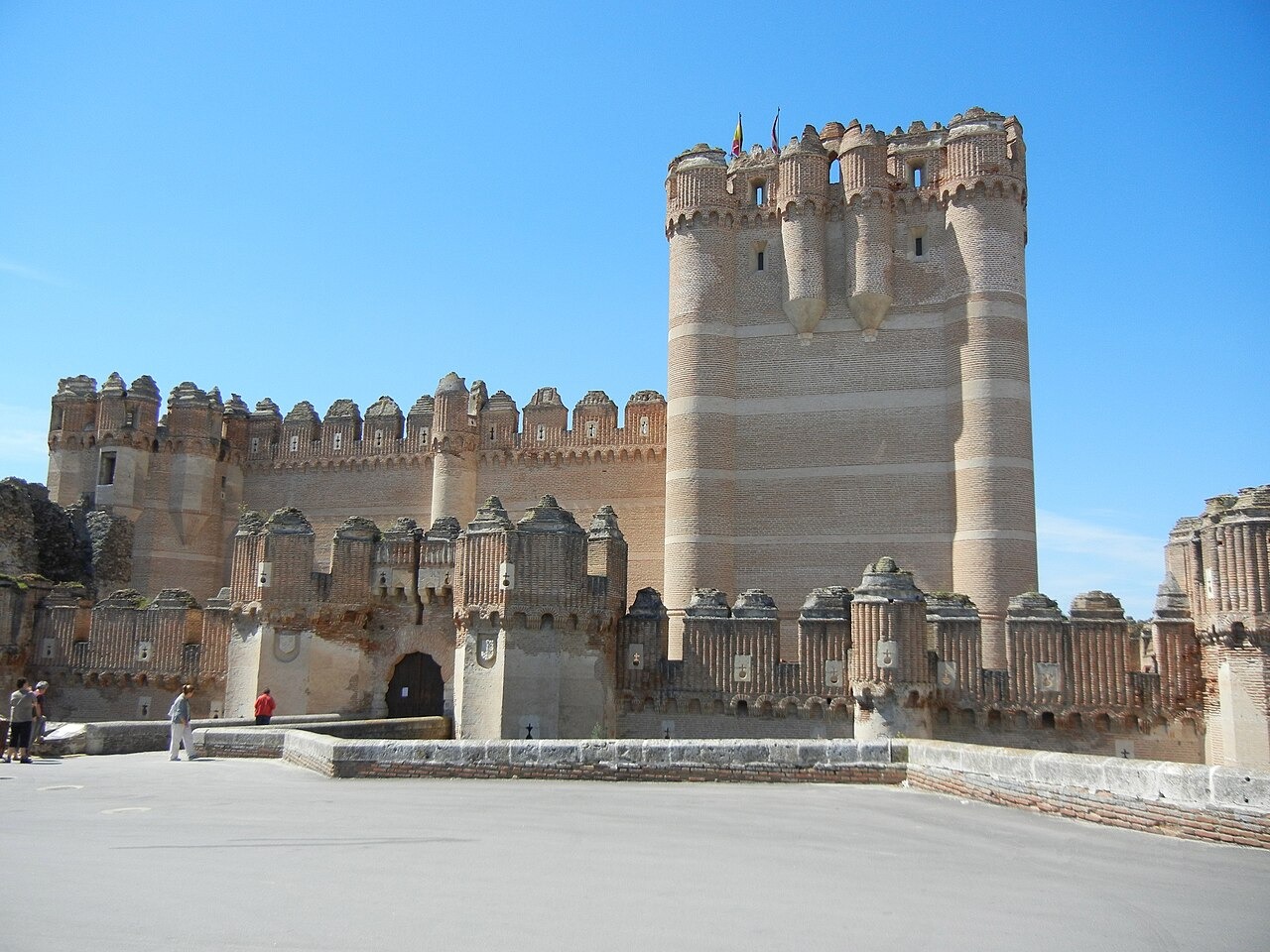
Mudéjar Architecture
Its construction was overseen by a Moorish architect, or “Alarife,” who brought the sophisticated techniques of Mudéjar architecture to life.
The castle is primarily constructed of brick, but these are no ordinary bricks; they were specially hardened to withstand the rigors of siege warfare.
The brickwork, laid with precision, forms a distinctive pattern that showcases the harmonious blend of Moorish and Gothic styles.
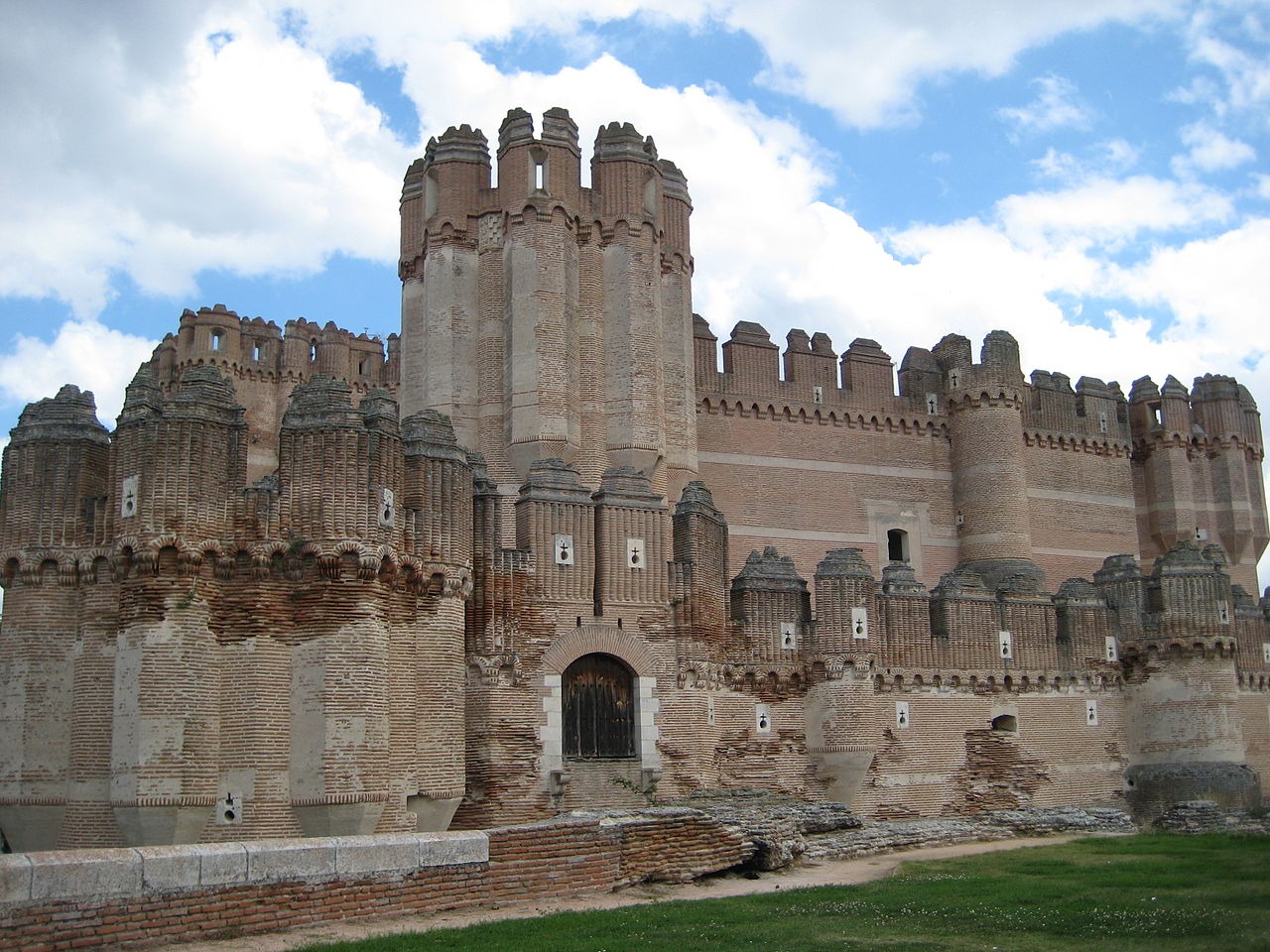
The castle’s construction was completed by 1493 and later passed into the hands of the Fonseca family.
During the Revolt of the Comuneros in 1521, the castle was attacked in retaliation for the burning of Medina del Campo by Royalist forces.

A Prison
In the 17th century, the castle was used as a prison for the Duke of Medina Sidonia, who was involved in a failed rebellion.
Over the years, Coca Castle fell into disrepair, especially during the Peninsular War when it was occupied by French troops from 1808 to 1812.
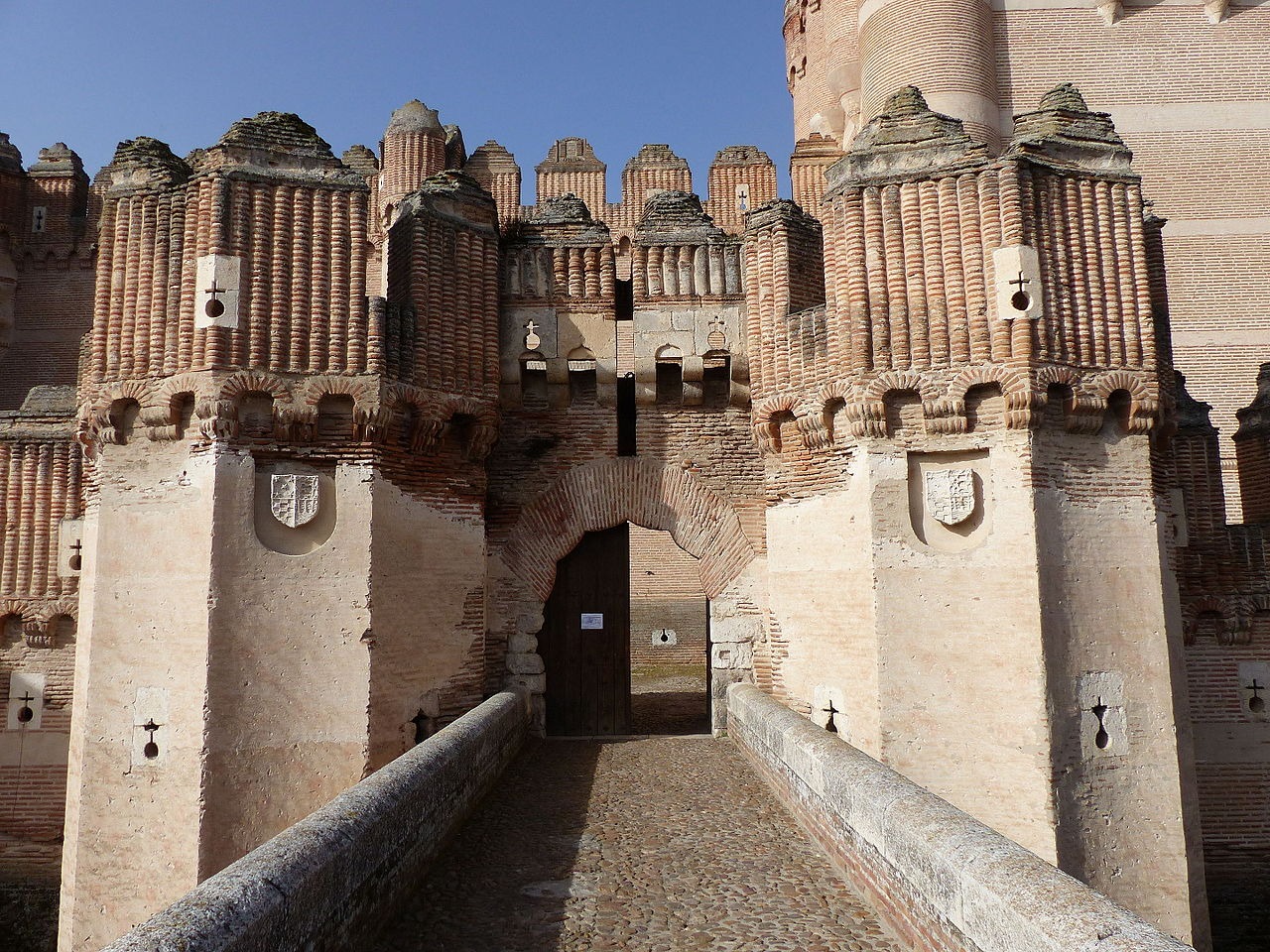
A National Monument Of Spain
In 1926, Coca Castle was declared a national monument of Spain.
The Spanish Ministry of Agriculture took control of the castle from the House of Alba and began restoration efforts in 1954.
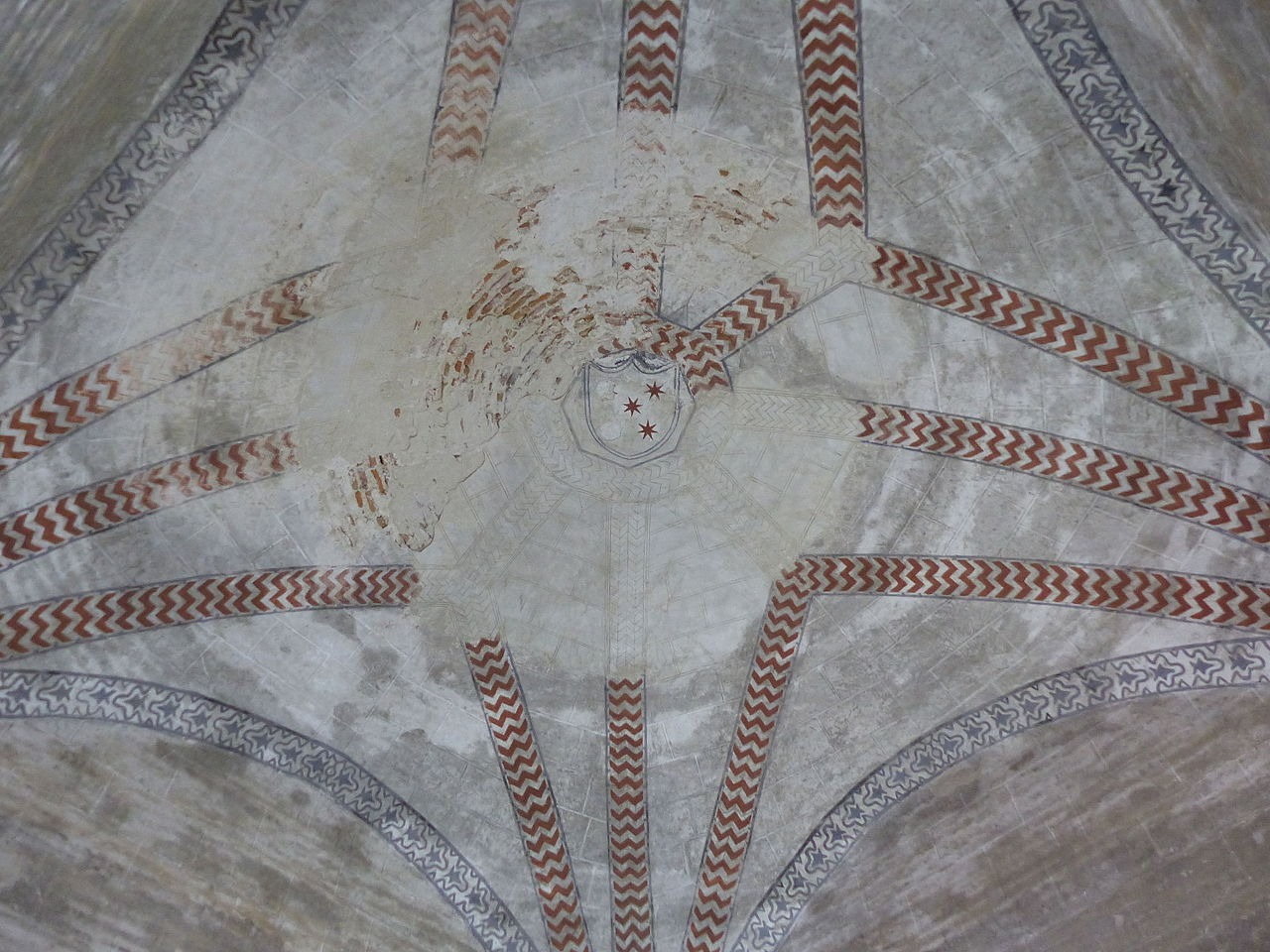
These renovations were completed in 1958, and the castle was repurposed to house a forestry school.
While the exterior of the castle retains its medieval appearance, the interior now features modern buildings, which may seem out of place but serve a practical purpose.
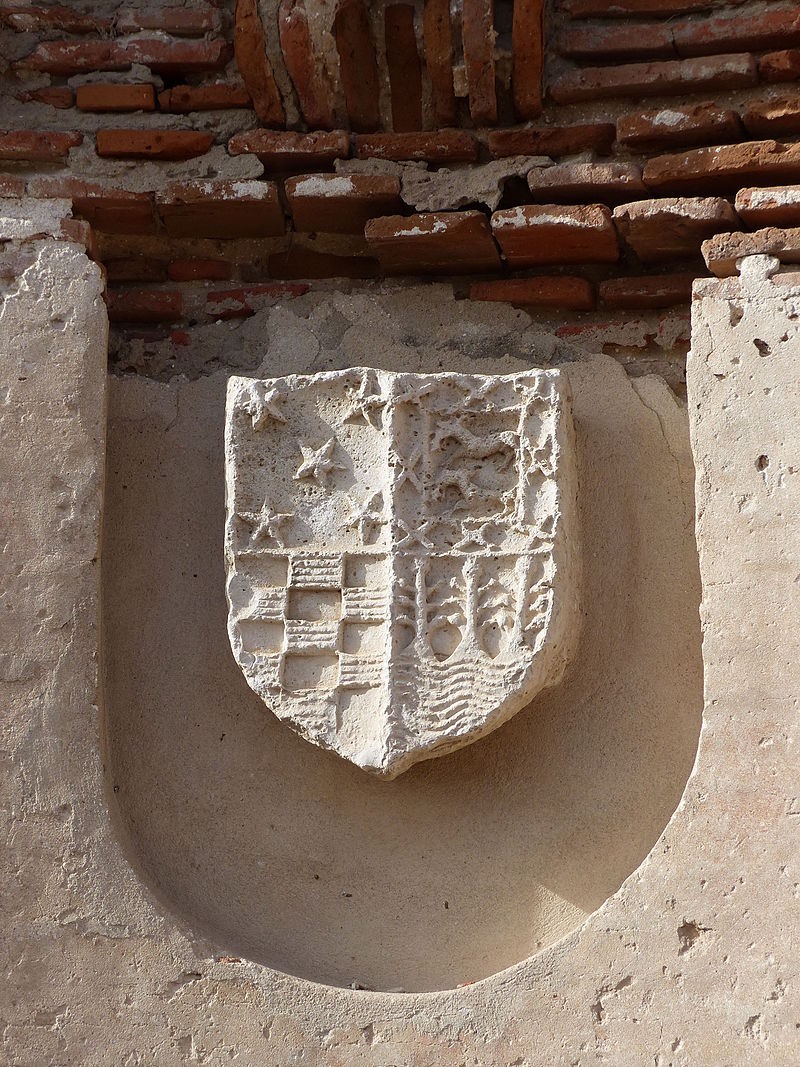
Architecture
The castle features a three-tiered system of fortifications.
The ground plan is rectangular, with two curtain walls surrounding the central keep, known as the Torre del Homenaje.
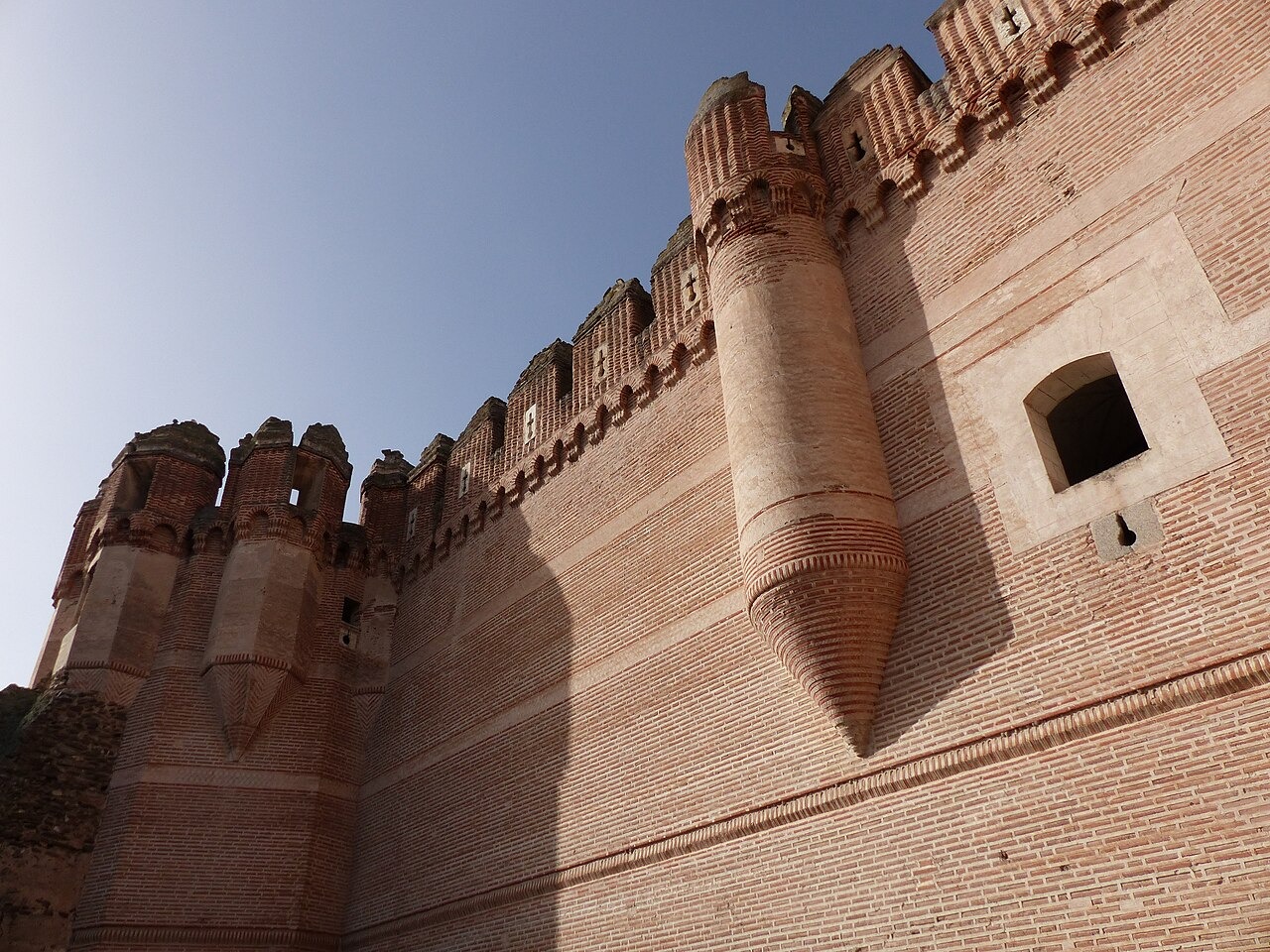
The keep, the last line of defense, is a massive structure that once housed various defensive mechanisms, such as pulleys and oil smelters to fend off attackers.
The castle’s deep moat not only served as a physical barrier but also as a psychological deterrent.
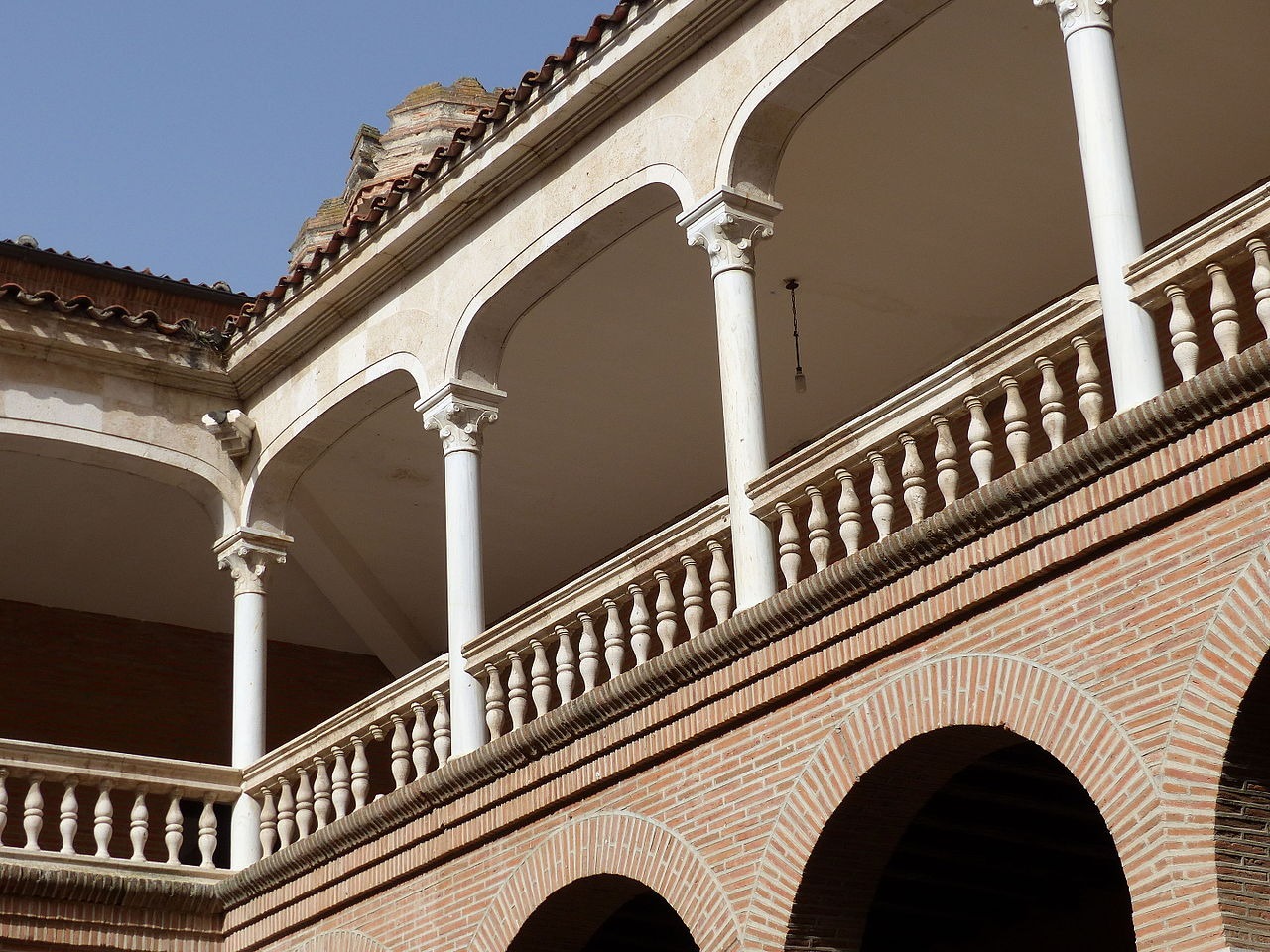
The castle also has a chapel.
Despite being damaged during the French occupation, it has been restored.
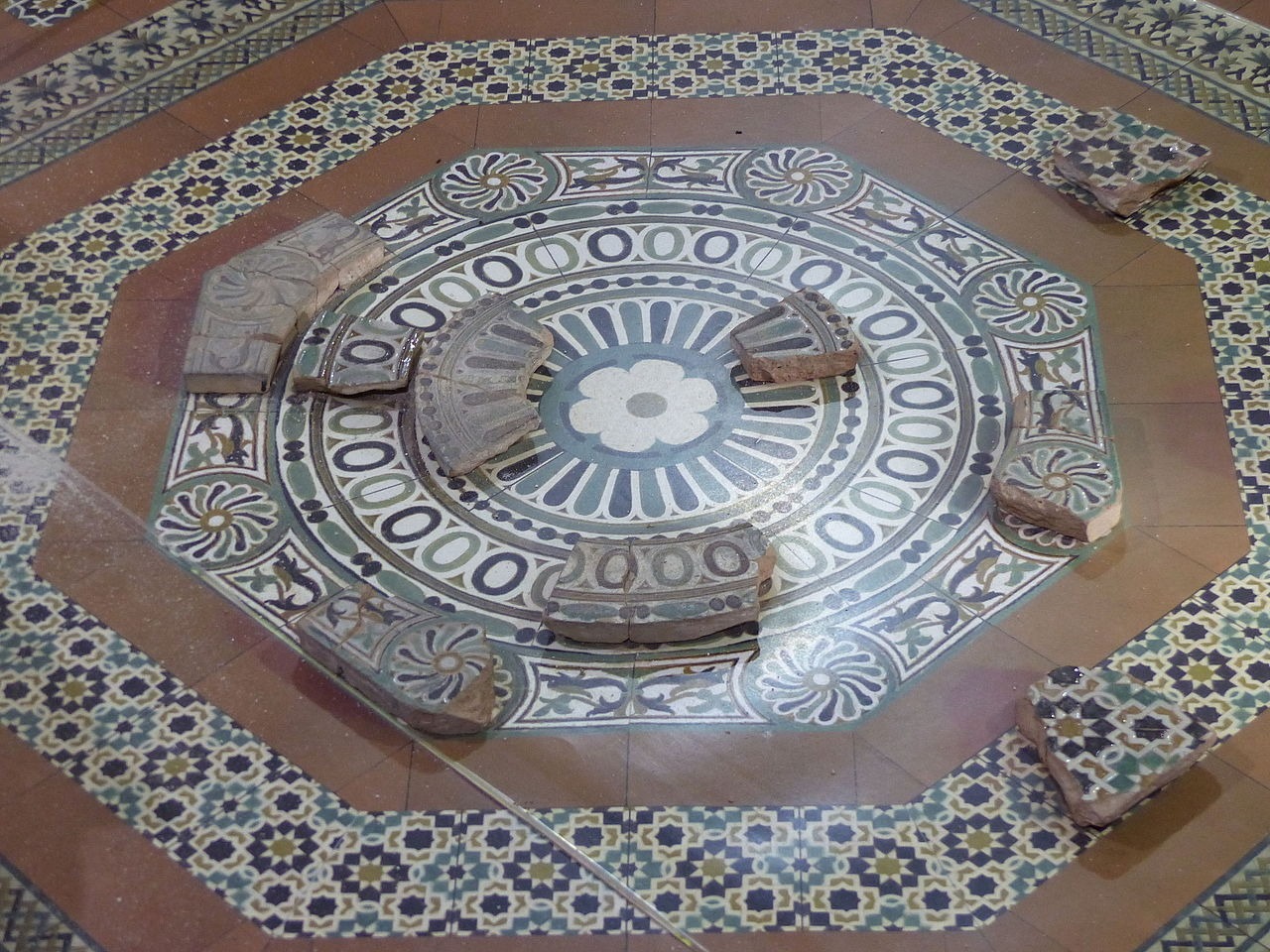
The chapel houses several art objects of historical significance, such as a Byzantine Christ painting from the 14th century and a Renaissance-style tabernacle.

The armory displays a collection of armor and weapons from the 15th to 17th centuries, alongside original furniture crafted from walnut wood and ivory columns.
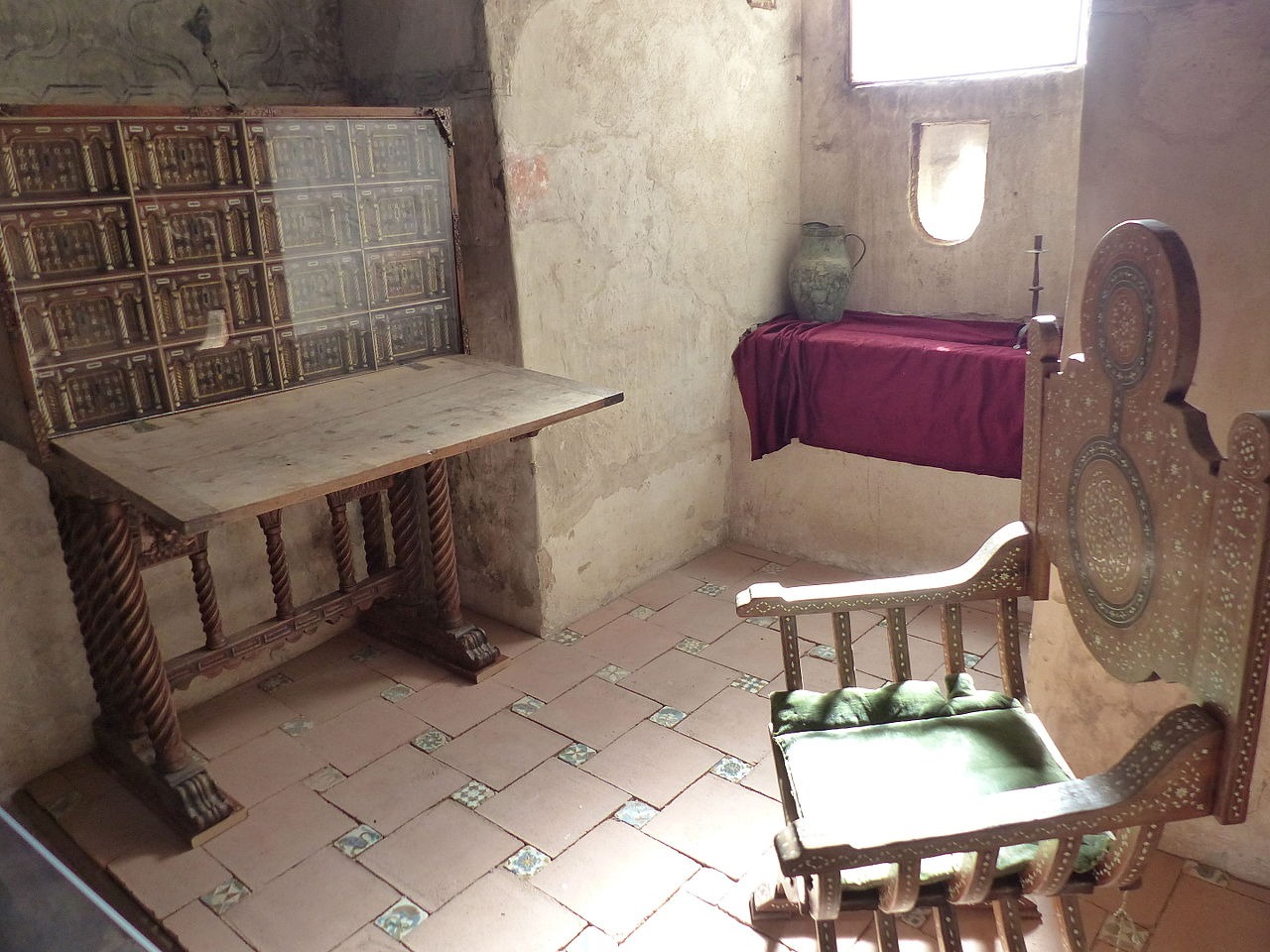
The central keep, where the Paseo de Ronda—a walkway that once served as a defensive patrol route—offers stunning views of the surrounding landscape.


